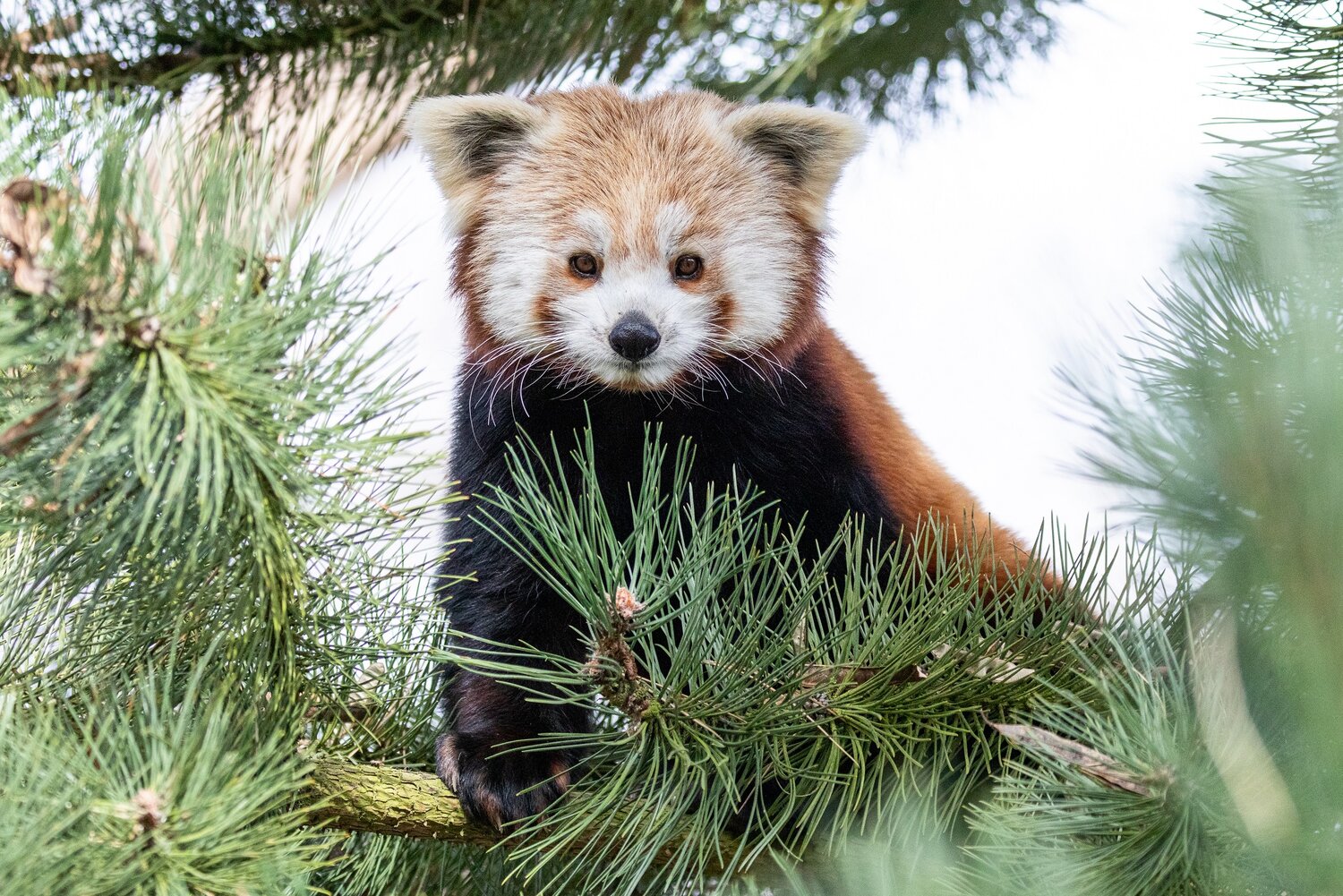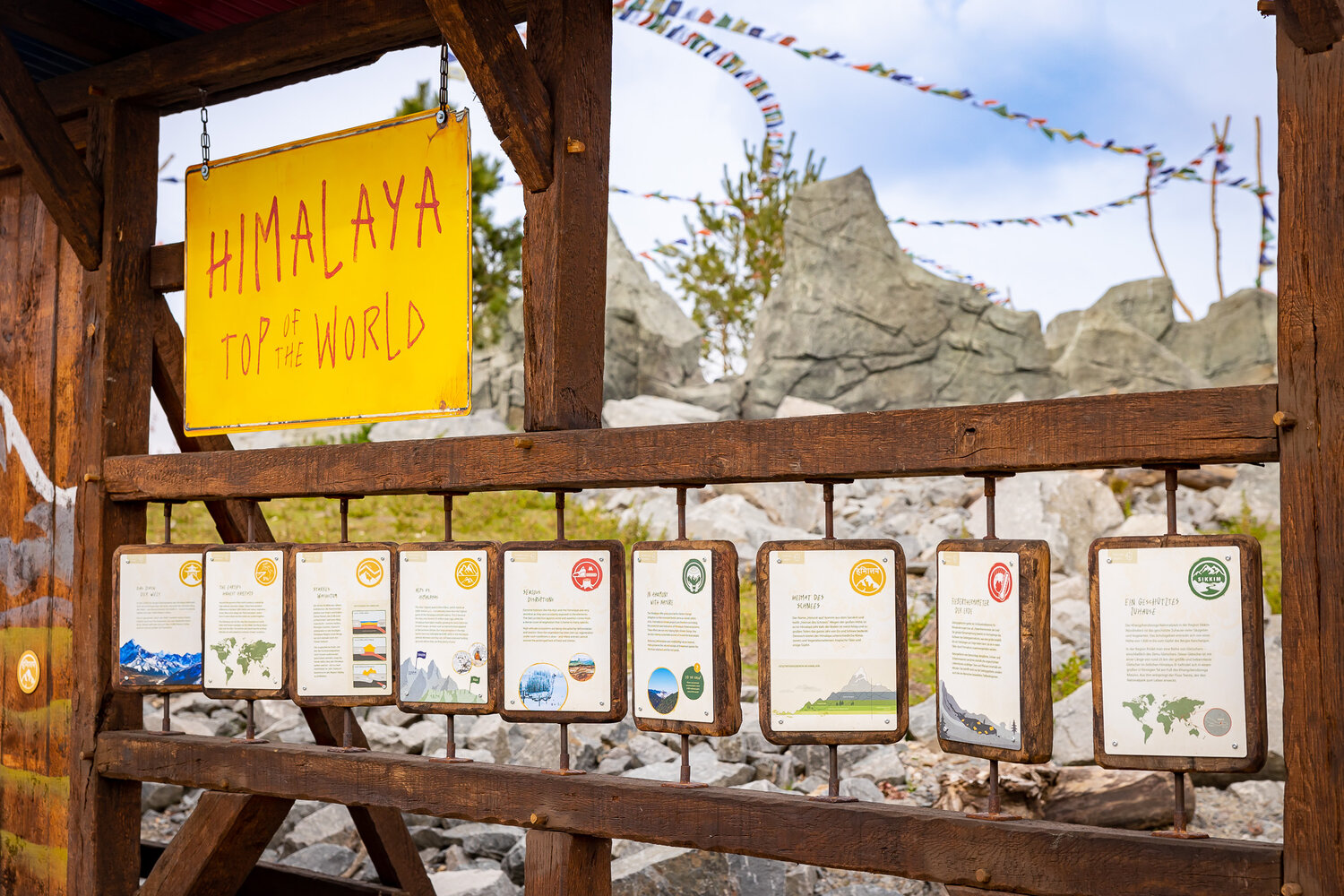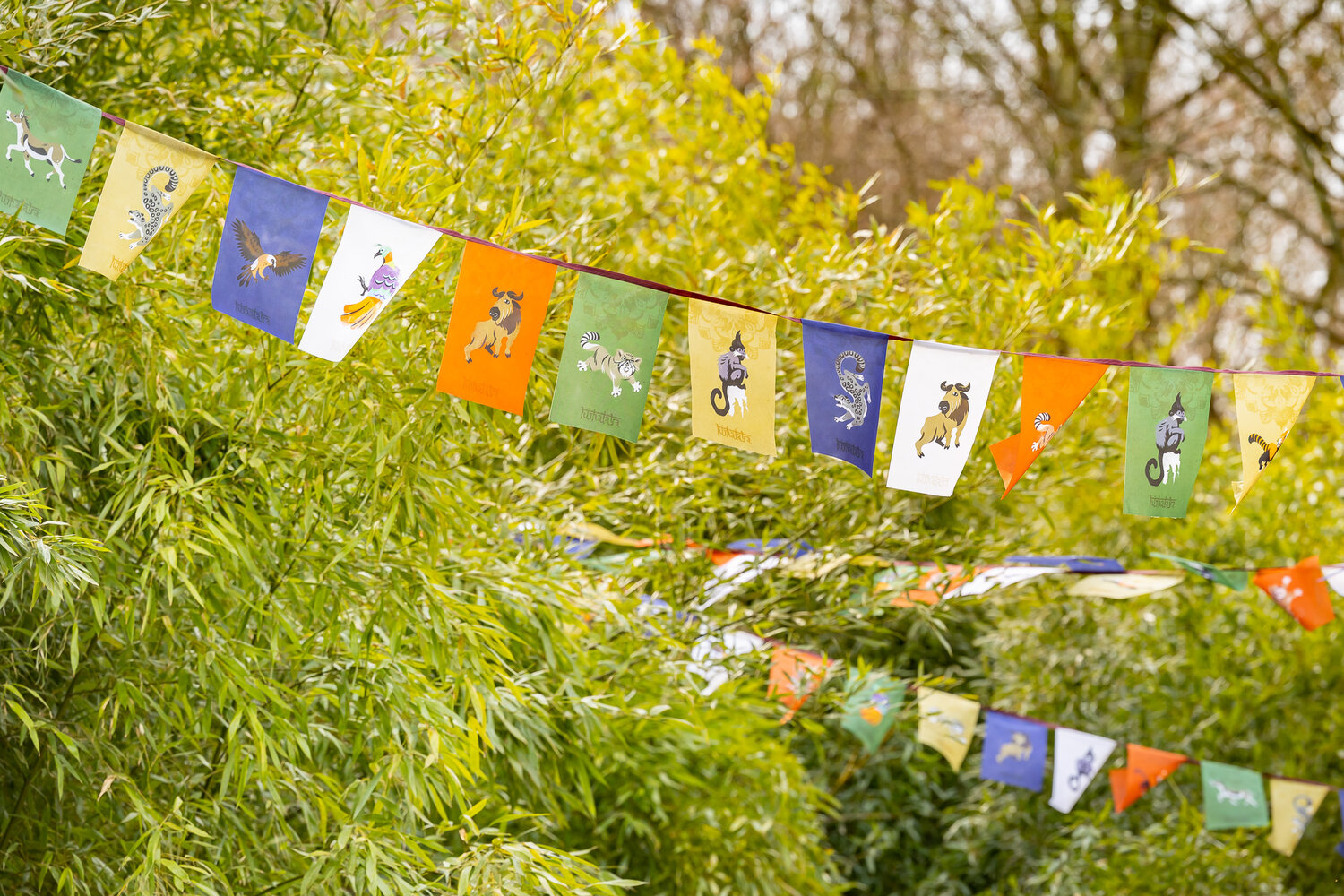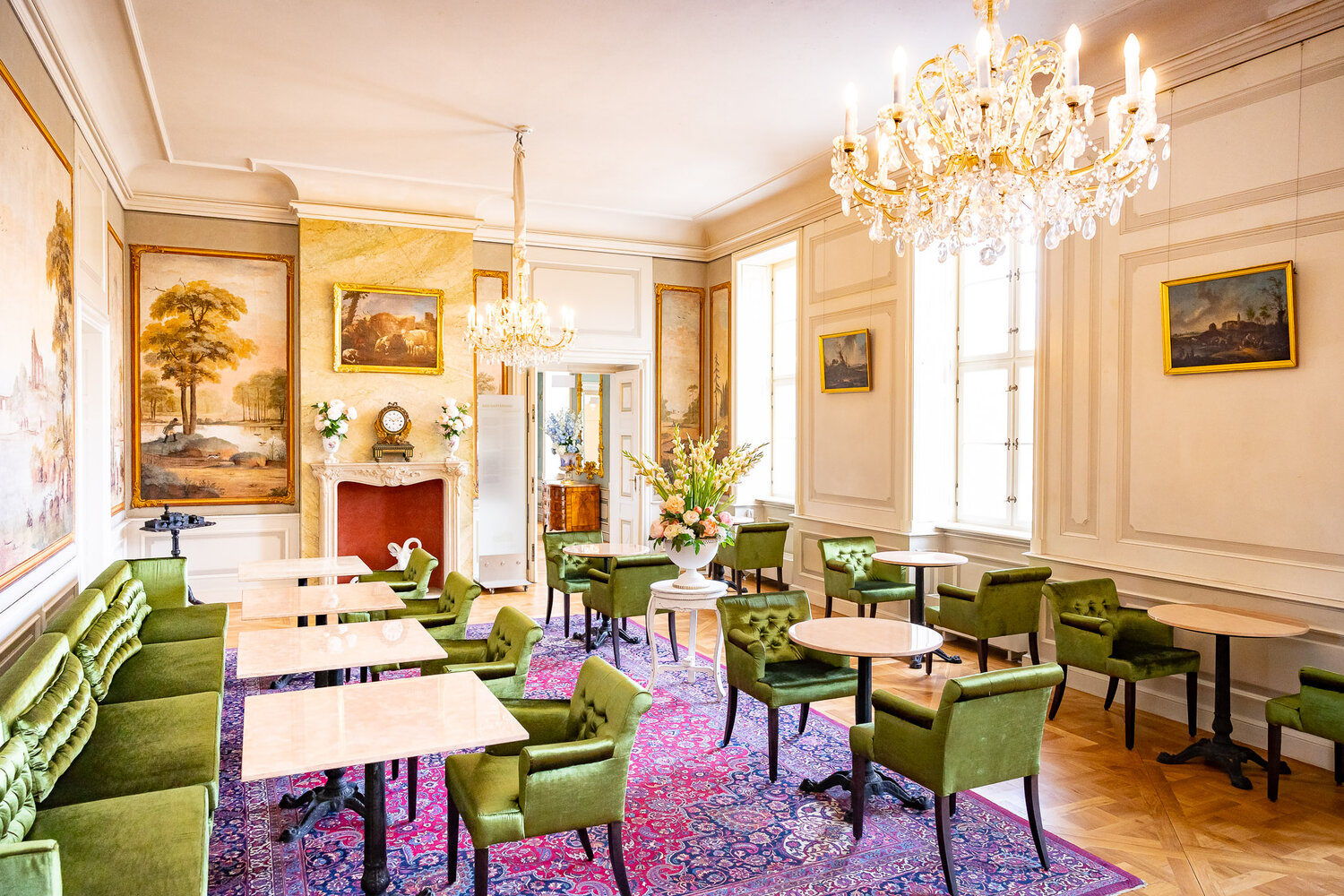A Himalayan experience in the German capital: Adorable red pandas clamber along branches high above the heads of unique tufted deer, while snow leopards quietly roam across the rocky terrain and a herd of kiangs graze peacefully on the plateau. The mountain trail winds its way upwards through dense bamboo groves, past nimble François’ langurs, stately Marco Polo sheep and iridescent monals, until it emerges at “the roof of the world” – with a wonderful view of Berlin.
In the northeastern section of the Tierpark, which used to house animals like moose, Ural owls and wolverines, visitors can now embark on a Himalayan expedition. The new 60,000 m² habitat is home to unique animals from the Earth’s highest terrain. Those who undertake the climb will encounter famous Himalayan natives like red pandas, snow leopards and bearded vultures, as well as lesser-known beauties such as golden takins, gorals, Pallas’s cats and satyr tragopans. Following a construction period of around a year, Tierpark Berlin’s 60-metre hill has been transformed into a Himalayan landscape with numerous new lookout points. Around 100 individual animals representing 22 different species – most of which are threatened in the wild – have found a new home on the slopes of the “mountain”. The planning phase began back in 2018 in collaboration with landscape architects from Hager Partner AG. Several partners, including landscape gardening company Krahnstöver & Wolf, were responsible for the natural design of the habitat – incorporating 3,000 tonnes of natural rock and more than 5,000 bamboo plants. The project cost a total of €5.3 million, most of which was provided by the Berlin Senate Department for Finance. “The Tierpark is an important recreational destination for the people of Berlin and is enjoying increased popularity,” said Finance Senator Daniel Wesener. “Its ongoing modernisation sends an important signal, especially after two years of the Covid-19 pandemic, which has posed a significant challenge for the Tierpark as it has for many places.” Wesner went on to say that the Tierpark’s new layout, with divisions into geographical zones, is a logical further development: “The new Himalayan habitat provides valuable insight into one of the most fascinating and important regions on Earth – a place that urgently needs our protection.” The planet’s highest mountain system stretches over 2,500 km, from Pakistan and Afghanistan in the west, along the Indian border and deep into China. It features Earth’s tallest mountain – Mount Everest – and its deepest gorge – the Kali Gandaki. The Himalayas’ very different climate zones are home to a vast array of plant and animals species that have evolved to thrive in this challenging environment.
Nature conservation charity NABU has been active in the Central Asian country of Kyrgyzstan for over 20 years now. With the support of Tierpark Berlin, it has successfully established a second anti-poaching unit to protect the approximately 800 snow leopards living there. “The leopards are mainly threatened by poaching and conflicts with humans,” explains NABU President Jörg-Andreas Krüger. “We are delighted by the support we have received from Tierpark Berlin, which has allowed us to extend the protection we offer snow leopards and their prey into the south of the country, too.” Zoo and Tierpark Director Dr Andreas Knieriem is also pleased about the partnership: “Species conservation is teamwork,” he says. “If we are to truly preserve biodiversity, then all those working to protect nature and conserve species must join forces. With NABU, we have found an excellent partner in the fight to protect threatened snow leopards.”
Knowledge on the go:Various information stations dotted along the Himalayan trail explain more about the origins and the significance of this extreme yet highly sensitive habitat. They also describe the fascinating evolutionary traits that enable animals to survive in the highest mountains on Earth. How are the plants and animals of the Himalayas interconnected within a complex and extensive food web? What exactly is a takin? And how do the Himalayas impact on the lives of millions of people? Visitors can find out the answers to these questions and more in the Valley of the Takins. As they stop for a breather on their way to the summit, they can learn how fast the human heart beats at high altitudes and why the Himalayas are sometimes referred to as the “third pole”. Get even higher: Climbing enthusiasts of all ages who haven’t had enough by the time they reach the summit can scramble up the rocks to get an even loftier view over the German capital.
Reopening of the Schloss Café
Now that spring is here, the garden café at Friedrichsfelde manor house is once again open for cake and coffee fans. From the beginning of April, the café welcomes guests from Thursday to Sunday, 10 a.m. to 4 p.m., serving speciality coffees and a wide selection of cakes and other tasty treats.
An overview of the animals in the new Himalayan habitat:
- Bearded vulture (NT)
- White eared pheasant (NT)
- Himalayan monal
- Satyr tragopan (NT)
- Omei Shan liochicla (VU)
- Silver-eared mesia
- Red-billed blue magpie
- Père David’s rock squirrel
- François’ langur (EN)
- Sichuan takin (VU)
- Golden takin (VU)
- Chinese goral (VU)
- Tufted deer (NT)
- Marco Polo sheep (NT)
- Blue sheep
- Siberian ibex (NT)
- Tadjik markhor (NT)
- White-lipped deer (VU)
- Eastern kiang
- Snow leopard (VU)
- Pallas’s cat
- Himalayan red panda (EN)
NT = Near threatened
VU = Vulnerable
EN = Endangered
CR = Critically endangered
Animal celebrities:
- Snow leopards Bataar (11) and Layla (2)
- Red pandas Rosie (2), Ruby (2), Polly (8), Tara (2) and Jian (2)
- Male Sichuan takin Gyatso (10)
- Male golden takin Jasper (11)
- Pallas’s cats Chengdu (2) and Maneki-Neko (7)
- François’ langurs Najib (2), Bao (2) and Huaidan (4)
Zoological highlights:
- A group of red pandas in a habitat that includes a walk-through area for visitors
- A shared habitat for blue sheep and Marco Polo sheep, a species found nowhere else in Europe
- François’ langurs, found nowhere else in Germany
Other facts and figures:
- Area: 60,000 m2
- Construction period: Approx. one year
- Financing:
- Total cost: €5.3 million
- €4.85 million in funding from the Berlin Senate Department for Finance
- €150,000 for the François’ langur habitat raised by the Society of Zoo and Tierpark Patrons
- €300,000 of own funding
- 8,000 shrubs and trees
- 7,500 grasses
- 13,500 perennials
- Approx. 3,000 tonnes of natural rock (110 truckloads)




